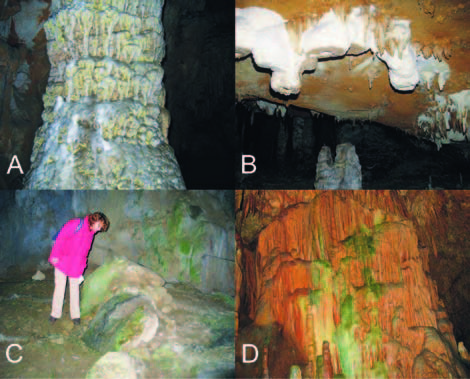Microorganisms in Hypogeon: Examples from Slovenian Karst Caves
DOI:
https://doi.org/10.3986/ac.v37i1.167Povzetek
In caves microorganisms inhabit distinct habitats where they develop various interactions. As an evidence of microbial activity several features can be identified. Microorganisms are involved bothin lithogenic and litholitic processes. Besides heterotrophs in caves autotrophic organisms can be also expected. Some cyanobacteria and microalgae in caves can survive even at photon flux densities lower than their photosynthetic compensation point. In the paper up-to-date identified groups of microorganisms (bacteria, cyanobacteria, microalgae, fungi and protozoa) withtheir localities in Slovenian caves are presented. Especially bacteria from caves, as the most diverse group, offer immense biotechnological and bioremediation potential. In caves microbial biomass can be considered a considerable food source for cave-dwelling higher organisms. Caves in Slovenia offer great chances to discover new species, as was fungus Mucor troglophilus discovered in association withthe cave cricket Troglophilus neglectus.
Prenosi

Prenosi
Objavljeno
Kako citirati
Številka
Rubrike
Licenca
Avtorji jamčijo, da je delo njihova avtorska stvaritev, da v njem niso kršene avtorske pravice tretjih oseb ali kake druge pravice. V primeru zahtevkov tretjih oseb se avtorji zavezujejo, da bodo varovali interese založnika ter da bodo povrnili morebitno škodo.
Podrobneje v rubriki: Prispevki




